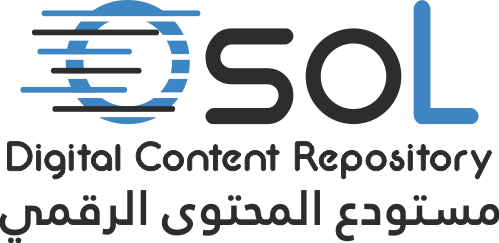Please use this identifier to cite or link to this item:
https://dspace.qou.edu/handle/194/2801| Title: | The Reality of E-learning in Public Schools in the Northern Governorates and its Relevance to Outstanding Performance from the Point of view Educational Administrators and Supervisors |
| Authors: | Abed alhak, Imad عبد الحق, عماد |
| Keywords: | e-learning outstanding performance northern governorates |
| Issue Date: | 1-Feb-2022 |
| Publisher: | Al-Quds Open University |
| Abstract: | The study aimed to identify the reality of e-learning and its relationship to outstanding performance from the point of view of school principals and educational supervisors in the northern governorates of Palestine, and to determine the role of each of the study’s variables (gender, educational qualification, job title, specialization, years of administrative experience, and region) in identifying the reality of e-learning and its relationship to outstanding performance, and the use of mixed curriculum. A random sample was selected according to two stages consisting of (315) school principals and educational supervisors in the northern governorates during the first semester of the 2021/2022 school year. A questionnaire was also used as a tool for collecting quantitative data while focus group was used to collect qualitative data. The results of the study showed that the overall degree of the reality of e-learning came to a medium degree, with an arithmetic average of (2.94), and the fields of study obtained a medium degree, where the field of “e-learning contributions” ranked first, “human readiness for e-learning” field ranked second, and the field of "e-learning environment" ranked third. As for the overall score for outstanding performance, it came to a medium degree, with an arithmetic average of (3.33). The results demonstrated that there were no statistically significant differences at the significance level (α ≤0.05) on the total score and sub-domains of the e-learning reality scale due to the variables: (gender, educational qualification, job title, specialty, and region). The results also showed that there were statistically significant differences on the total degree of the e-learning reality scale and the field of human readiness for e-learning due to the years of administrative experience variable. The differences came in favor of (from 5 - less than 10 years) and (10 years and more), while the differences were not statistically significant on the domains (e-learning environment, e-learning contributions). In addition, the results indicated that there were no statistically significant differences at the significance level (α≤0.05) in outstanding performance due to the variables: educational qualification, job title, specialization, years of administrative experience, and region, while the differences were statistically significant in outstanding performance according to the gender variable as the differences were in favor of females. However, there was a positive direct relationship, with statistical significance at the significance level (α≤0.01), between the reality of e-learning and outstanding performance, as the value of the Pearson correlation coefficient was (0.651), and the results clarify a statistically significant effect at the significance level (α ≤ 0.05) for each of the two fields: the contributions of e-learning and human readiness for e-learning in predicting the level of outstanding performance. |
| URI: | https://dspace.qou.edu/handle/194/2801 |
| Appears in Collections: | Educational Administration and Supervision - ماجستير الإدارة والإشراف التربوي |
Files in This Item:
| File | Description | Size | Format | |
|---|---|---|---|---|
| رسالة عماد ع22بد الحق بعد المناقشة 7.2.022.pdf | 2.28 MB | Adobe PDF | View/Open |
Items in DSpace are protected by copyright, with all rights reserved, unless otherwise indicated.
